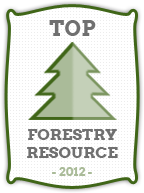 In light of my recent review and a chat with a friend, I’ve decided to open my own field notebook to scrutiny. So, dear readers, I submit for your viewing pleasure my current and most decrepit field notebook (cover at right)!
In light of my recent review and a chat with a friend, I’ve decided to open my own field notebook to scrutiny. So, dear readers, I submit for your viewing pleasure my current and most decrepit field notebook (cover at right)!
It achieved its awesome state through rain, snow, mud, wind, river water, tree pathogen and the cruel stompings of a certain vice-chairman. Watershed Processes class may be the final nail in the coffin for my stoic No. 311 level.
Aside from the sorry state of the cover, I will also show you the sorry state of its insides! I’m working on a term project in the Young Creek watershed that investigates whether a nearby clearcut has affected the creek’s water quality, velocity, and stream channel characteristics. The preliminaries involve everything from soil tests and vegetation surveys to streambed profiles and reach maps — most of which I’ll post below.




 What a busy few weeks! I’ve had a very strange and thought provoking experience, recently, which is mostly what I want to talk about in this post — especially if any of you can weigh in on the issue. But rather than append random updates to the end of the discussion, I’ll get them out of the way right off the top for those who are interested.
What a busy few weeks! I’ve had a very strange and thought provoking experience, recently, which is mostly what I want to talk about in this post — especially if any of you can weigh in on the issue. But rather than append random updates to the end of the discussion, I’ll get them out of the way right off the top for those who are interested.